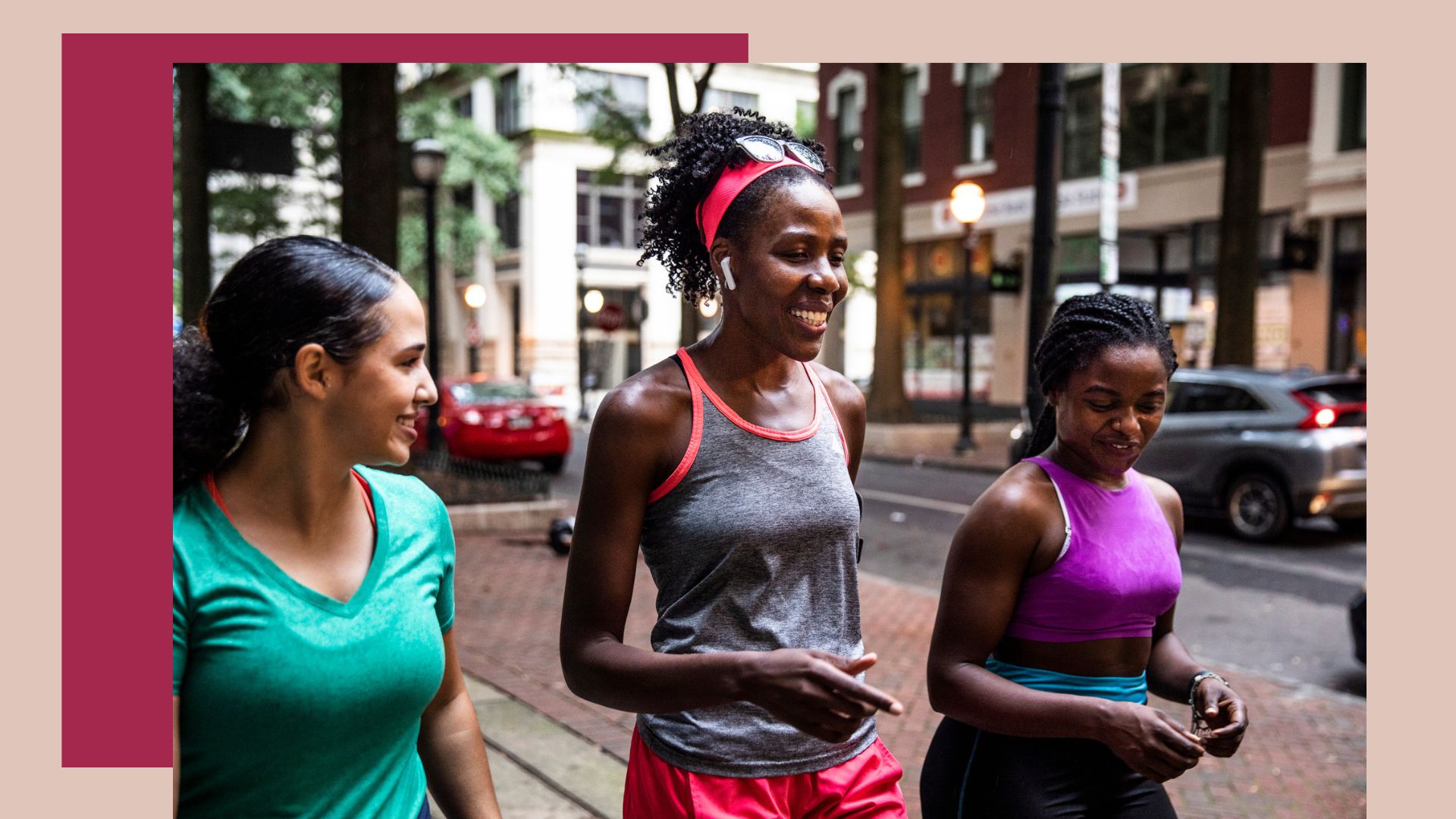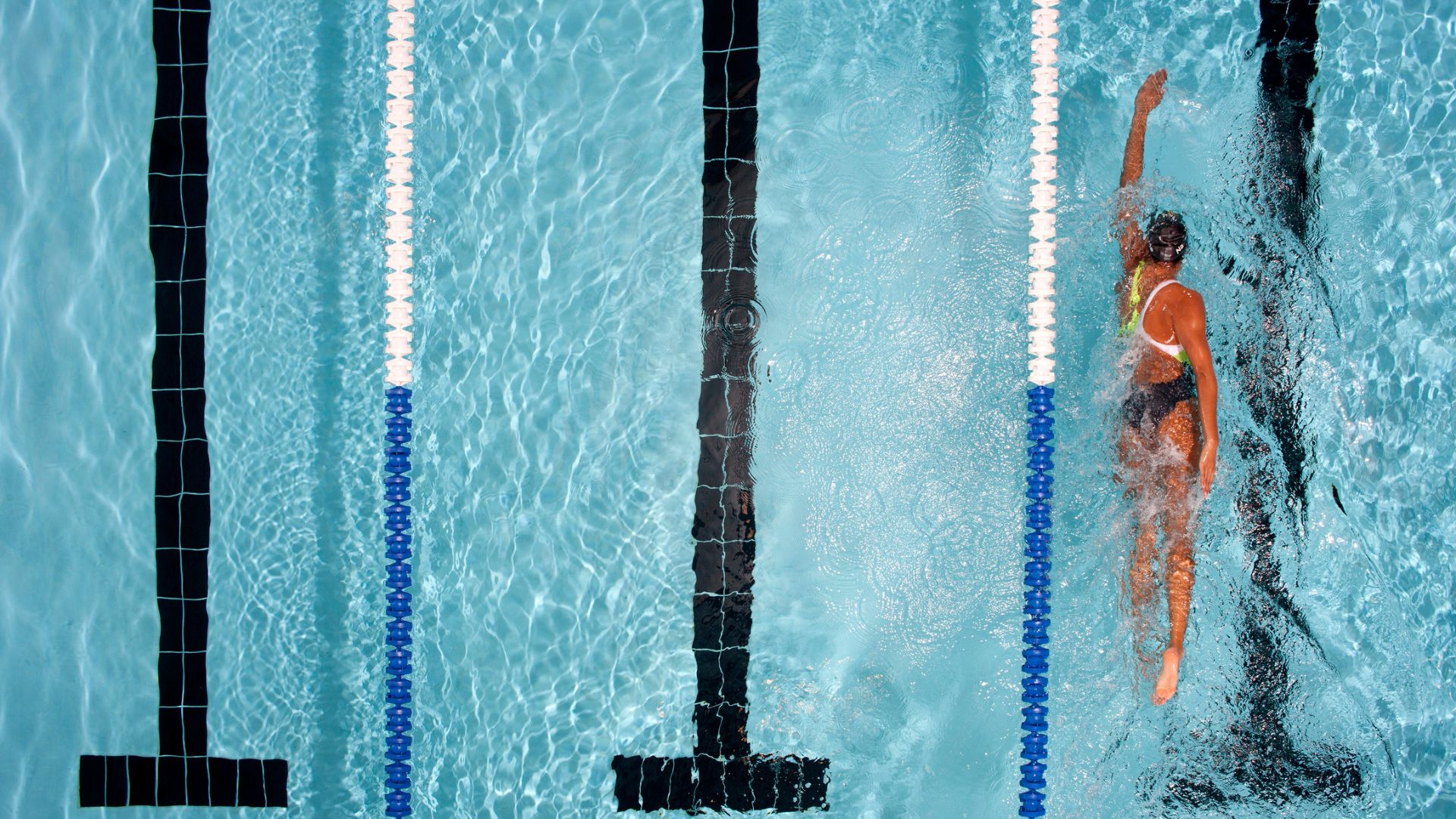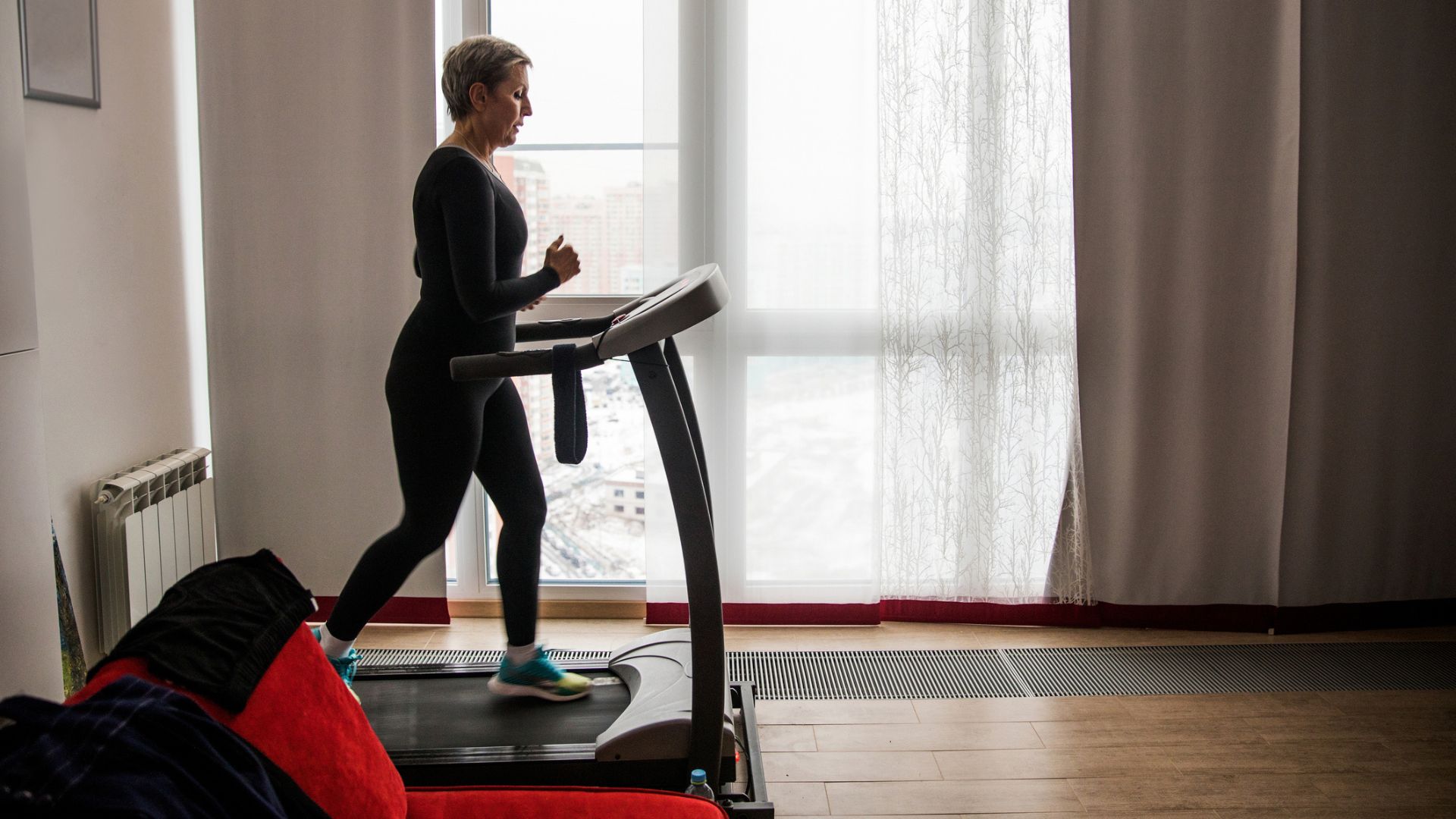What is LISS cardio and is it good for weight loss? Benefits, workouts and more
Discover LISS cardio for weight loss with tips from the experts and workouts to try


LISS cardio, aka low-intensity steady state cardio, includes popular exercises like walking, running, and swimming but when it comes to improving fitness or losing weight, it's often one of the most undervalued types of training.
When we think of exercise, especially exercise designed to burn calories for weight loss, we often think of intense, sweaty, wheezy breathing-inducing workouts like sprinting or interval training like HIIT. But all the evidence behind LISS refutes this and offers those who try it a way to burn calories, at a slower rate, but also at a lower intensity.
Over the last few years, thanks to training plans like the 12-3-30 workout and various wellness trends that have stuck around, there are millions more LISS cardio fans. If you want to try out this low-impact training style for yourself, this is what Bea Franchini, a specialist in women's personal training, and Lily Chapman, a performance coach and nutritionist, want you to know.
What is LISS cardio?
LISS cardio is a form of cardiovascular exercise that works in the total opposite way to high-intensity interval training, known as HITT. Instead of short bursts of exercise followed by a short recovery period, LISS encourages constant movement at a lower intensity.
"LISS stands for low-intensity steady state exercise and it's a form of cardio. Key examples of LISS training include brisk walking [like Nordic walking], cycling, or swimming," explains Bea Franchini, who is a personal trainer at MotivatePT.
With HIIT training like Crossfit, research from University of Wisconsin-La Crosse, your heart rate should hit the 80 to 95%-mark of your maximum threshold, while when doing LISS cardio, you should only be hitting 40 to 50% but it needs to be consistent.
You might also already know LISS training by one of its other names:
Sign up for the woman&home newsletter
Sign up to our free daily email for the latest royal and entertainment news, interesting opinion, expert advice on styling and beauty trends, and no-nonsense guides to the health and wellness questions you want answered.
- Low-intensity exercise
- Steady-state training (SST)
- Long slow distance (LSD) training
- Continuous cardiovascular exericise
Is LISS cardio good for weight loss?
Yes, as long as you maintain a calorie deficit throughout your LISS cardio training, you will lose weight. "This energy deficit needs to be achieved through consuming less calories than you are expending, or expending more calories through exercise," confirms Lily Chapman, who works at human performance company P3rform.
"LISS can therefore aid in increasing an individual's energy expenditure and allow for fat loss," she says. This means that along with training, you'll need to focus on eating less - or lower calorie foods - throughout the day.
There are plenty of benefits of LISS cardio but if weight loss is your main goal and you're not inhibited by factors such as joint issues or a lower level of overall fitness, then studies suggest there are more efficient calorie-burning exercises. Doing these instead of LISS will mean that you burn more calories in a shorter amount of time, but you won't burn more calories overall just on the exercise alone.
For example, a study by the University of Colorado found that calorie expenditure was the highest when their participants completed circuit training with hydraulic resistance, i.e. strength training with machines at the gym, rather than when they trained with weights, on a treadmill, or on a stationary bike. A review from the University of New South Wales also suggests that HIIT training is a highly effective way for anyone who is even marginally overweight to lose both subcutaneous and abdominal fat - including those with type 2 diabetes.
You can - and should - certainly still incorporate LISS training into your weight loss program though and you could always level up your workout with ankle weights. Not only is it an effective calorie burner, but going for a walk, swim, or cycle has so many benefits aside from weight loss.

Benefits of LISS cardio
1. Good for your mental and physical health
Like almost every other type of exercise, LISS cardio has major benefits for your overall health. "Studies show that those who partake in limited to no LISS exercise often have a low aerobic fitness level," says Chapman. "This is related to a risk of various forms of cardiovascular disease and strokes, and it also puts limitations on the daily functioning and mental capacity of an individual."
When it comes to the benefits of exercise, we also shouldn't forget the substantial mental health benefits that come with working out in the fresh air or having a gym routine. Multiple studies, including one by the University of Hong Kong, have confirmed the link between a lower risk of adverse mental health issues and having a regular exercise routine. It's also a social opportunity as well since LISS is a lower-impact exercise, so you can feasibly talk to others while working out. Plus, LISS cardio can be a great exercise if you feel run down as it's slow, steady, and can help stretch your legs out.
2. Improve your fitness
As well as improving your health and reducing the risk of adverse health conditions, LISS training can improve your fitness and enable you to perform better at other activities you love.
"LISS training alone can majorly improve your cardiovascular fitness, otherwise known as your aerobic capacity. This is the capacity of the cardiorespiratory system [the heart and lungs] to supply oxygen to the skeletal muscle system and the capacity of the skeletal muscle system to utilize that oxygen," Chapman says.
This should still be combined with some kind of exercise that increases your heart rate, like a HIIT treadmill workout, she adds. "And resistance training is also key, as this will improve your musculoskeletal fitness level by improving strength, mobility, and range of motion, bone health, as well as reducing chances of injury. It is recommended that at least 2 days a week should be devoted to resistance training, along with other amenities."

3. You can change LISS training to suit you
There are so many different types of LISS training, including walking for weight loss programs and swimming training for adults, so it really is an activity where you can just pick and choose what works for you. It can also fit around your eating routine, depending on whether you prefer to eat before or after a workout.
"With its low intensity, LISS can be included in most of the population's training programs. Options can change depending on an individual’s preference and it's fantastic for beginners who are new to exercise and looking to find a long-term, sustainable regime. This can be on-feet through a standard outdoor run or a little less joint load intensive through a cycle or adult swimming lesson at the local leisure center," Chapman says.
However, for those who are new to exercise and looking to LISS as a way to improve their fitness, be prepared to have to keep things interesting in your own way. "The only drawback of LISS is that it requires a longer duration of time, which could induce boredom if repeated too often."
4. Beneficial for those going through menopause
Putting menopausal weight gain to the side for a moment, LISS training can be very beneficial for negating the other symptoms of menopause - including the decline in muscle mass caused by the body's estrogen deficiency.
When it comes to exercise in menopause, we often think of strength training as being the most essential. And while this is true, thanks to strength training's ability to reduce the loss of muscle mass and improve bone density, LISS training can also help.
Research from Ball State University found that aerobic exercise was effective in reducing the risk of sarcopenia, which is age-related muscle loss. So despite what many think, aerobic training - such as LISS training - improves muscle function and can contribute to muscle growth in much the same way as strength training does.
"It can be particularly good for women going through menopause because it burns fat and builds muscle in a safe way," Franchini confirms. "It also might be more accessible for those who haven't exercised regularly for some time."
5. Safer for joints
"LISS cardio is safe for joints because it's a low impact exercise and it accommodates for declining coordination, which is another natural symptom of ageing," Franchini says.
However, it's important to supplement your LISS training with other movement. "It's unlikely that you'll move your joints in their full range of motion during LISS cardio, which is important to maintain joint health, especially as you get older," she says.
"Injuries because of prolonged stress on the body are also a risk with this type of training. If you're in a LISS session and you feel any painful niggles, such as in your knees or back, don't ignore it. Take a break and reassess."

LISS workout on a treadmill
The best LISS workout on a treadmill involves walking at a steady state, where you could still hold a conversation, for between 45 to 60 minutes. To start off, go for a 3.5 mph speed at zero incline, then adjust if you find that's too easy.
To get the most out of your LISS cardio workout, you'll need to find out your maximum heart rate though. To do this, subtract your age from 220. Using a heart rate monitor on an exercise machine or a fitness tracker like one of the best Fitbits, keep checking in on this and make sure that you're hitting 40 to 50% of this maximum at all points during your workout. If you're doing the workout above and your heart rate isn't hitting this level, you'll need to up the intensity either by increasing the gradient or the speed, it's up to you.
There are other ways to incorporate LISS cardio into your exercise plan though. Here are some basic LISS cardio workouts to try, depending on where you want to train:
- At the gym: Use an elliptical, rower, or exercise bike at a steady pace for 45 to 60 minutes.
- At home: Try out a Pilates for weight loss or yoga for beginners workout, designed to keep your heart rate within this key zone.
- Outdoors: Pull on your walking shoes and head out for a walk on flat terrain, where you won't be going up hills or accidentally adding intervals that could make you out of breath.
If you're taking on the treadmill or outdoor walking workouts then it's important to be aware that your body is still taking on a significant weight impact with every step. "High impact may induce injury," warns Chapman, reiterating the importance of strength training alongside LISS, "to allow the body to deal with the demands of the greater volume of training."

Grace Walsh is woman&home's Health Channel Editor, working across the areas of fitness, nutrition, sleep, mental health, relationships, and sex. She is also a qualified fitness instructor. In 2025, she will be taking on her third marathon in Brighton, completing her first ultra marathon, and qualifying as a certified personal trainer and nutrition coach.
A digital journalist with over seven years experience as a writer and editor for UK publications, Grace has covered (almost) everything in the world of health and wellbeing with bylines in Cosmopolitan, Red, The i Paper, GoodtoKnow, and more.
-
 Need spring style inspiration? Jennifer Aniston proves a shirt dress is the most versatile item you can invest in
Need spring style inspiration? Jennifer Aniston proves a shirt dress is the most versatile item you can invest inIf you only buy one piece this weekend, make it a shirt dress
By Matilda Stanley Published
-
 Celebrities you never knew got their start as models, from Angelina Jolie's 'terrible' experience to A-listers who started as pageant queens
Celebrities you never knew got their start as models, from Angelina Jolie's 'terrible' experience to A-listers who started as pageant queensWhether it was just for a short time or it's how they got discovered for something else, these stars owe it all to striking a pose
By Jack Slater Published